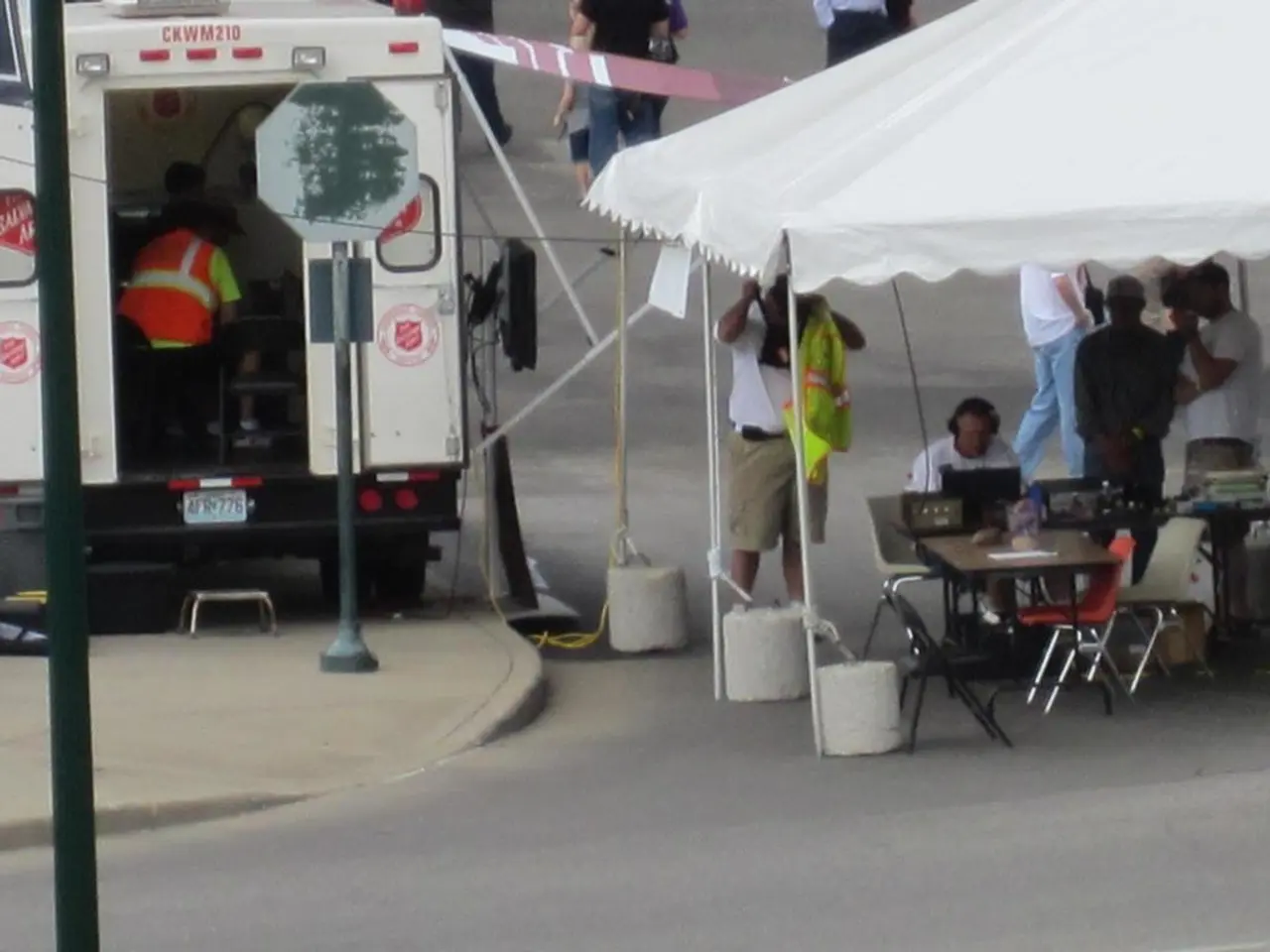Emergency Care in Rural America: A Tale of Staffing Challenges and Innovative Solutions
Rural Emergency Rooms Being Operated Without Regular Doctor Presence
Rural emergency rooms across the United States are grappling with a worsening shortage of physicians, a problem that has been exacerbated by financial strains and proposed Medicaid spending reductions. This staffing crisis, which raises concerns about patient safety and access to quality care, is a pressing issue in the rural healthcare landscape.
Regulations and Trends
In an effort to sustain emergency services in rural areas, the Consolidated Appropriations Act of 2021 introduced the Rural Emergency Hospital (REH) designation. This model allows certain rural hospitals to maintain emergency services without inpatient care, addressing staffing challenges directly.
The Centers for Medicare and Medicaid Services (CMS) has also updated the Conditions of Participation for emergency services, focusing on readiness and transfer protocols. However, these regulations do not directly address staffing ratios or physician requirements.
The Staffing Crisis
A recent study found that in 2022, at least 7.4% of emergency departments across the U.S. did not have an attending physician on-site 24/7. More than 90% of these understaffed emergency departments were in low-volume or critical access hospitals.
The emergency department at Dahl Memorial Hospital, a small facility at the intersection of two dirt roads in an unspecified town, is no exception. The hospital's three-bed emergency department relies on physician assistants and nurse practitioners, as there is no doctor on-site.
Alternative Staffing Arrangements
In response to the staffing crisis, strategies such as the REH model and alternative staffing arrangements (e.g., using nurse practitioners) are being explored to maintain emergency services in rural areas. The American Medical Association and the American College of Emergency Physicians support state and federal laws or regulations requiring ERs to staff a doctor around the clock.
However, the American College of Emergency Physicians (ACEP) is also asking the federal government to require critical access and rural emergency hospitals to have physicians on-site or on call day and night. Leon Adelman, an emergency medicine physician in Gillette, Wyoming, supports 24/7 on-site physician coverage in ERs only where it's feasible.
State-Level Initiatives
State-level initiatives to support rural healthcare through policy changes are also being discussed. For instance, Indiana, Virginia, and South Carolina have recently passed legislation requiring ERs to staff a doctor around the clock. In Vermont, a report recommended that several hospitals cut physicians from their ERs as part of a mandated process to improve the state's troubled healthcare system.
However, these initiatives do not address the issue of physician shortages in rural areas. States should require Physician Assistants (PAs) and Nurse Practitioners (NPs) without on-site physician supervision to have extensive emergency experience and the ability to consult with remote physicians.
A Case in Point
A case in Oklahoma involved a 19-year-old woman who died after being misdiagnosed by a Nurse Practitioner (NP) certified in family medicine, not emergency care, and working alone at an ER. Few NPs have emergency certification, according to an analysis. This underscores the importance of ensuring that rural ERs are staffed with healthcare professionals who are adequately trained to handle emergencies.
The Road Ahead
Some doctors argue that if 24/7 on-site physician coverage is required, states should provide funding to help hospitals implement it. ACEP's call for federal intervention highlights the need for a comprehensive approach to addressing the staffing crisis in rural emergency rooms.
The Society of Emergency Medicine PAs outlines the training and experience PAs should have before practicing in rural areas or without on-site doctors. The first of its kind study does not provide concrete evidence that such staffing arrangements are increasing, but it is a step in the right direction towards ensuring the safety and quality of care in rural emergency rooms.
In June 2023, a patient arrived at the emergency room of Dahl Memorial Hospital without a doctor on-site. The patient's medications, doses, and vital signs were administered, monitored, and managed by a paramedic and nurses while Physician Assistant Carla Dowdy was on-site. This incident underscores the critical role PAs and NPs play in rural emergency care, but it also highlights the need for ongoing training and support to ensure they are equipped to handle emergencies effectively.
As the staffing crisis in rural emergency rooms continues to evolve, it is crucial for policymakers, healthcare providers, and the public to work together to find sustainable solutions that prioritize patient safety and access to quality care.
- In the ongoing debate about staffing solutions for rural emergency rooms, the American College of Emergency Physicians (ACEP) is advocating for stricter regulations, calling for critical access and rural emergency hospitals to have physicians on-site or on call day and night.
- As rural health news continues to unfold, a critical aspect of discussion is the need for extensive training for healthcare professionals, such as Physician Assistants (PAs) and Nurse Practitioners (NPs), who are often the backbone of rural emergency rooms, to ensure they are adequately prepared to handle emergencies effectively.




